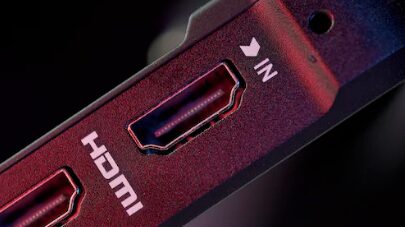Why Don’t Laptops Have HDMI Input?
The HDMI Input Mystery
Introduction:
In today’s digital world, we heavily rely on technology to connect and communicate with others. Laptops have become an essential tool for work, entertainment, and everything in between. However, have you ever wondered why laptops don’t come equipped with HDMI input? Join us as we delve into the reasons behind this perplexing feature omission.
The Importance of HDMI:
High-Definition Multimedia Interface (HDMI) has become the standard for connecting devices and transmitting audio-visual signals seamlessly. It is widely used in television sets, gaming consoles, projectors, and other multimedia devices. HDMI provides superior audio and video quality, making it an incredibly convenient and popular interface.
The Limitations of Laptops:
While laptops are increasingly powerful, portable, and versatile, they often lack HDMI input capabilities. Many users find this limitation frustrating, especially when they want to connect their laptops to external monitors, TVs, or gaming consoles. So, why do laptops miss out on this feature?
Size and Portability:
One of the primary factors limiting the inclusion of HDMI input in laptops is the device’s physical size and portability. Laptops are designed to be lightweight and compact, allowing users to carry them around effortlessly. Adding an HDMI input port would increase the size and weight of the laptop, compromising its portability.
Cost Considerations:
For laptop manufacturers, cost is a crucial factor when deciding the features to include. While HDMI input ports are relatively inexpensive, they still contribute to the overall production costs. In order to keep prices competitive and affordable for consumers, laptop manufacturers often prioritize other essential components rather than adding HDMI input.
Alternative Connectivity Options:
Though laptops lack HDMI input, they offer alternate methods of connecting external devices. Most laptops are equipped with HDMI output ports, allowing users to connect their laptops to external displays or projectors. Additionally, laptops often feature USB ports, enabling users to connect external devices using HDMI adapters or USB-to-HDMI converters.
Evolving Technologies:
As technology advances, we witness constant changes and improvements. Manufacturers are continuously working on creating innovative solutions to enhance the laptop experience. It is possible that future laptops may include HDMI input or alternative, even more convenient connectivity options.
In Conclusion:
While it may be frustrating to not find HDMI input on laptops, there are valid reasons behind this omission. The size and portability constraints, cost considerations, and the availability of alternative connectivity options all play a role. Nevertheless, as technology progresses, we can look forward to seeing how laptops evolve and adapt to meet our multimedia needs.
Do you need an HDMI input on your laptop?
Feel free to share your thoughts and experiences in the comments section below!
(Note: This article does not constitute any professional advice or official statements. The content provided is based on personal research and opinions.)

